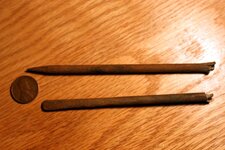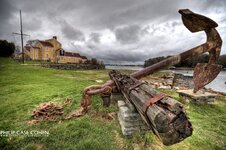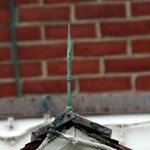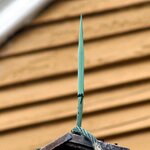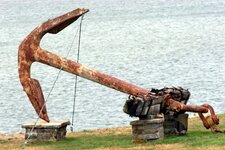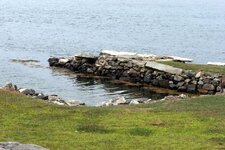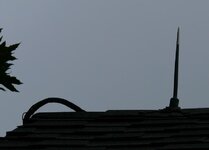steelheadwill
Gold Member
- Jan 2, 2010
- 6,689
- 715
- 🥇 Banner finds
- 1
- Detector(s) used
- Brain eyes ears and nose
- Primary Interest:
- Other
Hit this dead center with my shovel, otherwise would never have seen ductile copper core, brittle copper sheath, and what appears to be insulative material between.
pointed on one end, flattened on other, about 9" length.
compared with others on roofs, looks similar to ones on the early sections of the Wentworth/Coolidge Mansion, Portsmouth NH, the later parts of the building have what appear to be 3 piece units, anyone familiar with early lightning rods ??
Here's an interesting history of the mansion: http://www.seacoastnh.com/Places_&_Events/Historic_Tours/Wentworth-Coolidge_Mansion/
From Wiki :
Pointed-Tip LIghtning Rods
•The pointed-tip lightning rod (the American version of the blunt-tip lightning rod) was first proposed in 1749 in an experiment famously conducted by Benjamin Franklin. As the experiment played out, he observed that a rod built with a sharpened tip directed electricity away from a charged metal orb, which he believed provided better safety measures over the blunt-tip. His Franklin Rods were soon protecting colonial homes from Maine all the way down to Georgia.
no mention of the 'cored' design.
Thanks to all, & Great Digs, Herbie.
pointed on one end, flattened on other, about 9" length.
compared with others on roofs, looks similar to ones on the early sections of the Wentworth/Coolidge Mansion, Portsmouth NH, the later parts of the building have what appear to be 3 piece units, anyone familiar with early lightning rods ??
Here's an interesting history of the mansion: http://www.seacoastnh.com/Places_&_Events/Historic_Tours/Wentworth-Coolidge_Mansion/
From Wiki :
Pointed-Tip LIghtning Rods
•The pointed-tip lightning rod (the American version of the blunt-tip lightning rod) was first proposed in 1749 in an experiment famously conducted by Benjamin Franklin. As the experiment played out, he observed that a rod built with a sharpened tip directed electricity away from a charged metal orb, which he believed provided better safety measures over the blunt-tip. His Franklin Rods were soon protecting colonial homes from Maine all the way down to Georgia.
no mention of the 'cored' design.
Thanks to all, & Great Digs, Herbie.


